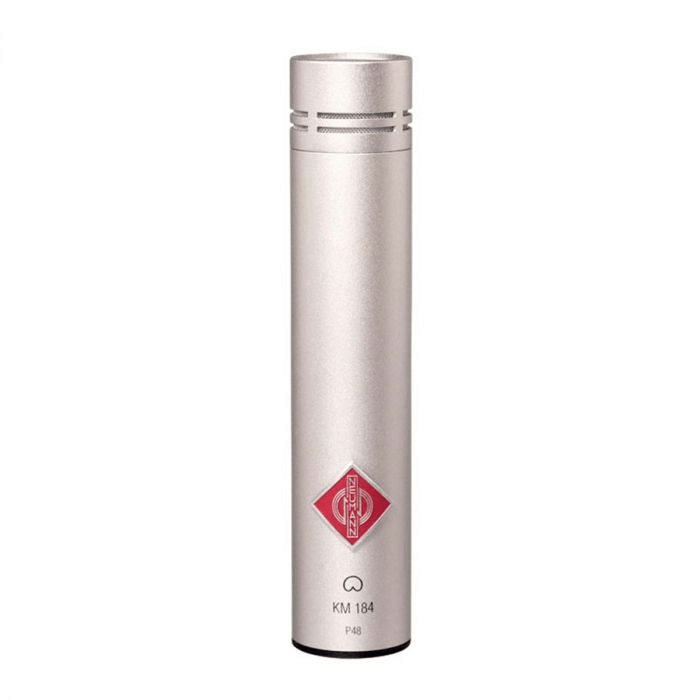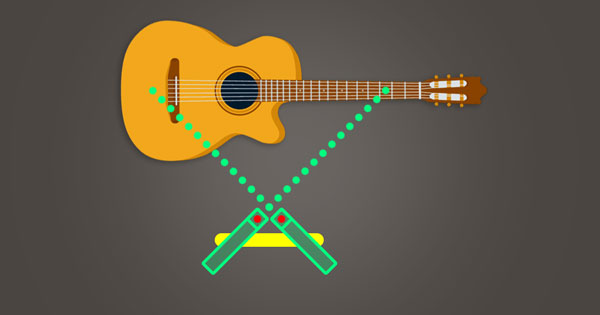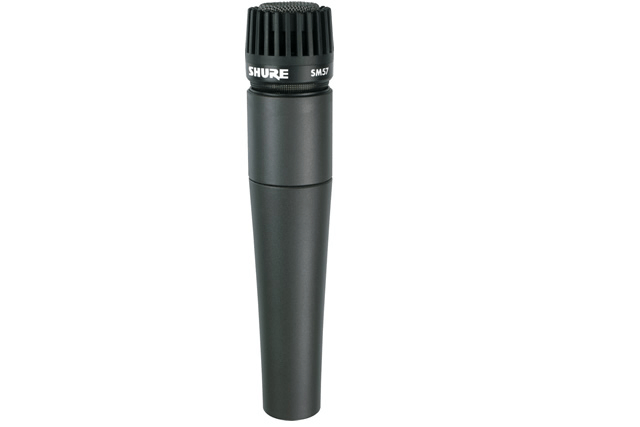When recording acoustic guitar, capturing the richness and depth of its sound is crucial, and the right microphone can make all the difference. Large-diaphragm condenser microphones are renowned for their sensitivity and ability to record the intricate nuances of acoustic instruments. They can provide the warmth and clarity that acoustic guitarists seek. Whether you’re a musician aiming for studio-quality recordings at home or a professional engineer, selecting the best large diaphragm condenser microphone is essential for creating that perfect take. Let’s explore some of the top choices that promise to bring out the best in your acoustic guitar performances.
When selecting the best large diaphragm condenser microphone specifically for recording acoustic guitar, there are several key criteria to consider:
- Frequency Response: Look for a mic with a full and flat frequency response that captures the richness and variety of tones produced by an acoustic guitar.
- Polar Patterns: Cardioid or multi-pattern microphones are preferred because they focus on sound coming from in front and reduce background noise, offering versatility in different recording environments.
- Sensitivity: Sensitivity is crucial for acoustic instruments. Select a microphone that can capture the nuances and dynamics of guitar playing without introducing noise or distortion.
- Signal-to-Noise Ratio: A higher ratio means less background noise. A mic with a good signal-to-noise ratio ensures a clean recording of your guitar’s natural sound.
- Build Quality and Durability: The microphone should be well-built to withstand studio use and potential transportation needs.
- Ease of Use: Consider if the microphone needs additional equipment, like preamps, or if it’s simple to set up and use for a quick recording session.
- Price: Reflect on your budget and aim for the best quality within your price range without overspending on features you may not need.
Balancing these traits will help you find a large diaphragm condenser microphone that elevates the natural warm tones of your acoustic guitar, providing clarity and detail in your recordings.
| Microphone | Price Range (Approx.) | Polar Pattern | Frequency Response | Sensitivity | Max SPL | Additional Features |
|---|---|---|---|---|---|---|
| Neumann KM 184 | $800 – $900 | Cardioid | 20Hz – 20kHz | 15mV/Pa | 138dB | Compact size, transformerless circuitry |
| AKG C214 | $350 – $450 | Cardioid | 20Hz – 20kHz | 20mV/Pa | 156dB | Integrated suspension, Bass-cut filter |
| Rode NT1-A | $200 – $300 | Cardioid | 20Hz – 20kHz | 25mV/Pa | 137dB | Ultra-low noise, includes pop shield & shock mount |
| Audio-Technica AT4050 | $700 – $800 | Multiple patterns | 20Hz – 18kHz | 17.8mV/Pa | 149dB | Switchable polar patterns, High SPL handling |
| Shure KSM32 | $500 – $600 | Cardioid | 20Hz – 20kHz | 12.5mV/Pa | 139dB | Integrated 3-stage pop protection, Low self-noise |
Please note that depending on your specific needs for acoustic guitar recording (like the style of music, setting, personal preferences for sound, etc.), different features and specifications might be more relevant to you. It’s often a good idea to listen to sound samples or try out microphones in person if possible to see what suits your taste and the acoustic environment where you’ll be recording.
Neumann KM 184

Overview:
The Neumann KM 184 is a small-diaphragm condenser microphone with a reputation that precedes it in the world of acoustic guitar recording. Its design and build are truly a nod to Neumann’s commitment to quality. When testing it out, the clarity and precision it offers for acoustic guitar is simply stunning. The KM 184 captures the natural essence of the guitar, allowing every strum and pluck to resonate as if you’re sitting in the room with the instrument.
Its uncolored sound profile makes it incredibly versatile, but it shines exceptionally when paired with acoustic guitars. The slight presence boost it carries ensures that the details in your playing do not get lost in translation. Although traditionally known as a small-diaphragm mic, the KM 184 competes fiercely in capturing acoustic instruments compared to large diaphragm condensers.
Specs:
The KM 184 features a cardioid polar pattern, which is excellent for isolating your guitar from unwanted background noise. It also means you’d get fewer room reflections and more of that direct guitar tone, which is often desired. Its frequency response is quite flat with a gentle rise in the higher frequencies, adding that sparkle without becoming harsh.
Pros:
- Exceptional detail and clarity, enhancing the acoustic guitar’s natural sound.
- Well-built and designed, ensuring longevity and consistent performance.
- The cardioid pickup pattern offers excellent isolation for clean recording.
- Neumann pedigree and reliability, a brand much revered by professionals.
Cons:
- It comes with a higher price tag, which may not be suitable for all budgets.
- It’s a small-diaphragm condenser, so if you’re strictly looking for a large diaphragm, this might be a point of contention, though its performance might challenge such reservations.
Price:
Speaking of its price, the Neumann KM 184 is indeed an investment. It tends to sit within the professional range of microphones, and you will find it priced accordingly. However, considering the impeccable sound quality it can add to your recordings and its professional-grade reliability, the price can be justified for serious musicians and recording aficionados.
AKG C214 Large-Diaphragm Condenser Microphone

Overview:
The AKG C214 is a professional-grade condenser microphone that shines when it comes to capturing acoustic guitar sounds. It’s essentially a more affordable alternative to its high-end sibling, the AKG C414, which is a legend in studio microphones. The C214 offers a generous portion of the C414’s sound quality and characteristics but at a more accessible price point, making it a jewel for musicians and home studio owners.
From my experience, the C214 has a warm and clear character, which suits the nuanced harmonics of an acoustic guitar beautifully. It handles high sound pressure levels impeccably, which means that it can capture the dynamics of your plucking and strumming without any distortion. The microphone’s cardioid pickup pattern is effective at isolating the guitar from unwanted ambient noise, thus ensuring that what you capture is just the pure sound of the instrument.
Specs:
- Large-diaphragm condenser
- Cardioid polar pattern
- Frequency response: 20 Hz to 20 kHz
- Max SPL: 156 dB (with pad)
- Low cut filter and 20 dB attenuator switch
Pros & Cons:
Pros:
- Provides part of the high-end C414’s sound at a lower cost.
- Warm, yet detailed sound signature that complements acoustic guitars.
- Solid build and design, ensuring durability.
- The low cut filter and attenuation pad add versatility.
- Handles loud sources without distortion, which is great for dynamic playing.
Cons:
- Lacks the multiple pickup patterns available in more expensive models like the C414.
- Some users may find its sound slightly colored, though this can be favorable for certain instruments.
- It doesn’t come with a shock mount, which would be a great addition for the price.
Price:
The AKG C214 typically retails between $350-$400. While not the cheapest option on the market, its price is justified by the quality performance and reliability it offers. It’s a great investment for those looking to record high-quality audio without breaking the bank on professional studio gear.
In summary, the AKG C214 is an exceptional microphone for recording acoustic guitars, giving a performance that rivals much pricier microphones. Its warmth and clarity can really help to bring out the character of the instrument, making it a go-to microphone for both amateurs and professionals. Granted, it’s not without its minor shortcomings, but its virtues easily eclipse them, especially when you factor in its cost-efficiency. For anyone keen on stepping up their acoustic guitar recordings, the C214 is a worthy contender to consider.
Rode NT1-A

Overview
The Rode NT1-A is a true workhorse in the realm of large diaphragm condenser microphones. Designed for versatility, it has become synonymous with delivering crystal clear, studio-quality recordings at an accessible price point. When it comes to acoustic guitar, the NT1-A stands out as an excellent choice due to its warm and rounded sound that complements the natural tones of the instrument.
Upon using the NT1-A, I was immediately struck by its exceptional clarity and sonic presence. It provides a full-bodied acoustic sound with just the right amount of brightness without feeling harsh or brittle, a balance that is not easily achieved. Its cardioid pickup pattern does an admirable job at isolating sounds from the front while minimizing room noise, making it suitable even for less-than-ideal recording environments.
The microphone comes in a complete package, with a shock mount, pop shield, XLR cable, and even a dust cover. The inclusion of these accessories is a generous touch and ensures that you can start recording immediately without additional purchases.
Specs
- Polar Pattern: Cardioid
- Frequency Response: 20Hz to 20kHz
- Max SPL: 137dB
- Equivalent Noise: 5dBA
- Output Impedance: 100Ω
Pros:
- Exceptionally low self-noise, which is great for intimate acoustic guitar recordings.
- Broad frequency range captures the nuances of your guitar with fidelity.
- Robust construction and comes with a comprehensive accessory package.
- Delivers a balanced warmth that enriches the natural sound of an acoustic guitar.
Cons:
- Fixed cardioid pattern may not be as versatile for those looking for multi-pattern options.
- The sound might be too bright for some preferences, especially for guitars with naturally high top ends.
Price
Priced at around $229, the Rode NT1-A presents itself as an outstanding investment for those seeking professional-grade recordings without breaking the bank. It’s an affordable option in the large diaphragm condenser category that doesn’t compromise on quality or the richness of sound.
Personal Opinion
I’ve found the Rode NT1-A to be an invaluable asset in any microphone collection, especially for those recording acoustic guitar. Its ability to convey the subtle expressions of fingerstyle playing, as well as the dynamic strumming of rhythm parts, is commendable. It’s a microphone that not only captures sound but does so with a character that enhances the recording. If your focus is on achieving a polished and refined acoustic guitar tone, the NT1-A should be at the top of your list.
Audio-Technica AT4050

Overview:
The Audio-Technica AT4050 stands out in the realm of large diaphragm condenser microphones, particularly when capturing the natural sound of an acoustic guitar. This versatile microphone is revered for its honesty and warmth, delivering a sound that is both true to the source and pleasing to the ear. It’s built to AT’s exacting standards, resulting in a robust and durable design that feels reassuringly solid whether in a studio boom arm or on a stand right next to you as you play.
Upon testing the AT4050 with an acoustic guitar, the first thing you notice is its smooth, natural response. It doesn’t hype the high end or muddy the lows, a common pitfall with lesser microphones, which can lead to a brittle or boomy recording, respectively. Instead, it presents a balanced frequency response that flatters the woody, resonant qualities of the guitar.
The AT4050 also shines in its ability to handle high sound pressure levels. When you’re playing more aggressively, some mics might distort, but the AT4050 captures the dynamic range of the guitar beautifully without flinching. Regardless of your playing style, it remains detailed and expressive. Its dual large diaphragms are fine-tuned to perfection, revealing the nuanced expression in your performance.
Another feather in the cap of the AT4050 is its multi-pattern capability. Whether you’re looking for the focused sound of cardioid, the more open and roomy omni, or the side-cancelling figure-eight, this microphone brings out the best in your acoustic guitar in any recording situation.
Specs:
- Element: Externally-polarized (DC bias) condenser
- Multiple Polar Patterns: Cardioid, omnidirectional, figure-eight
- Frequency Response: 20-18,000 Hz
- Max Input Sound Level: 149 dB SPL, 1 kHz at 1% T.H.D.; 159 dB SPL, with 10 dB pad (nominal)
Pros:
- Exceptionally truthful sound reproduction, perfect for acoustic instruments.
- Multi-pattern selection widens recording possibilities.
- High SPL handling is ideal for capturing loud and dynamic performances.
- Strong and durable build, while still maintaining sound sensitivity.
Cons:
- The natural sound might not be best for those seeking a colored or vintage character.
- On the higher end of the price spectrum, which might not be suited to all budgets.
Price:
The Audio-Technica AT4050 is not a budget microphone, but it’s a serious investment for serious outcomes, often found in the $700-$800 range. It’s priced fairly for the discerning ears of a professional or an enthusiast devoted to capturing the very essence of their acoustic guitar.
Shure KSM32

Overview:
The Shure KSM32 is often celebrated for its reliability, detailed sound, and versatility. This cardioid condenser microphone has earned its place as a professional piece of equipment in both studio and live settings. I’ve found that it particularly shines when tasked with capturing the delicate nuances of an acoustic guitar.
The KSM32 maintains a flat frequency response which allows for a true representation of the guitar’s sound. Its capacity to handle high sound pressure levels also makes it a superb option for both soft fingerpicking and more aggressive strumming without distortion. When recording, there’s a transparency and warmth that I find quite compelling, preserving the natural timbre of the acoustic guitar.
Specs:
- Polar Pattern: Cardioid
- Frequency Response: 20Hz to 20kHz
- Output Impedance: 150 ohms
- Max SPL: 154 dB
- Sensitivity: -36 dBV/Pa (15.8 mV)
- Low-Frequency Roll-Off and a 15dB Pad
Pros:
- Exceptional flat frequency response captures true sounds
- Class A transformerless preamplifier circuitry eliminates cross-over distortion
- Built-in 3-stage pop filter minimizes breath noise
- Handles high SPLs gracefully, which is great for various playing styles
- The KSM32’s durability stands out – it’s built like a tank, making it a long-term investment.
Cons:
- It’s on the pricier side, which can be a downside for budget-conscious musicians or hobbyists.
- Some may prefer a mic with a bit more color or character to the sound, rather than the faithful reproduction that the KSM32 offers.
- The weight and size of the KSM32 could be cumbersome for some, especially in a crowded home studio or when traveling.
Price:
The Shure KSM32 falls into a mid-to-high range price bracket. You are paying for professional studio quality, which doesn’t come cheap. However, its build and sound quality justify the investment for serious musicians and producers. The price reflects its standing as a long-term staple, avoiding the need for frequent replacement or upgrades.
The Shure KSM32 is a commendable choice for those wanting to capture the true essence of their acoustic guitar. Its resilience, audio fidelity, and professional-grade components make it a standout option. While it may dent the wallet initially, the KSM32 is a microphone that avoids the false economy of cheaper alternatives, providing unmatched performance that can turn a simple recording into a work of art.
Conclusion:
In summary, when choosing the best large diaphragm condenser microphone for acoustic guitar, consider your recording environment, budget, and desired sound characteristics. Each microphone we’ve discussed offers unique features, from warm, rich tones to detailed, transparent recordings. Whether you’re a budding home studio enthusiast or a seasoned professional, investing in a quality large diaphragm condenser microphone can significantly elevate the capture of your acoustic guitar’s natural resonance and nuance.
While large diaphragm condenser microphones beautifully capture acoustic guitar in the studio, sometimes you might want added mobility and convenience. A wireless lavalier microphone is an excellent supplementary choice – allowing guitarists to easily record crystal-clear audio during live performances or dynamic video productions without restricting movement.
FAQs:
- Why are large diaphragm condenser microphones recommended for acoustic guitars?
Large diaphragm condenser microphones are preferred for acoustic guitars because they can capture a wide frequency range with natural warmth and clarity, which is essential for the intricate sounds of the instrument. - Do I need phantom power for a large diaphragm condenser microphone?
Yes, large diaphragm condenser microphones typically require 48V phantom power, supplied by your audio interface or mixing board, to operate correctly. - Can I use the same large diaphragm condenser microphone for vocals and acoustic guitar?
Absolutely! Large diaphragm condenser microphones are versatile and can be used effectively for both vocals and acoustic guitar, making them a great addition to any recording setup.

































.png)








